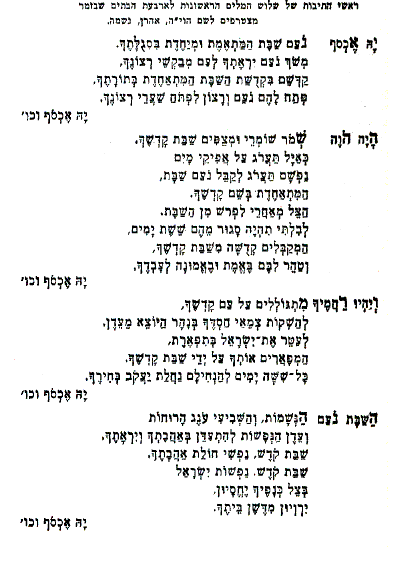Music
Klezmer
Klezmer was a type of Jewish folk music that was prevalent throughout Eastern Europe. With similarities to the Eastern European folk music, Klezmer provided some of the most popular dance and instrumental tunes in the Yiddish speaking world.
Klezmer artists from Stolin and the vicinity, such as Asher Wainshteyn (1890-1983), performed through-out the Pinsk, Belarus region for Jews and non-Jews alike. His music and that of his fellow klezmorim is carried on by Yale Strom, a descendant of Stoliners, thanks to a manuscript of Wainshteyn’s which includes tunes indigenous to Stolin and the region. Read more about the klezmer music of Wainshteyn and Strom in an excerpt from Yale Strom’s The Book of Klezmer.
Here are samples of a few of the Stoliner pieces as performed by Yale Strom and his band, Hot Pstromi:
And please make sure to visit Yale’s webpage at yalestrom.com to listen to his music, find his books, and follow his projects.
Nigunim
Nigunim were Jewish religious tunes, especially prominent in Chassidic communities. Klezmorim also played them as part of their repertoires at weddings, and many non-jews enjoyed dancing to nigunim as well. Many nigunim came from local folk tunes that were then made a bit more Jewish sounding.
“Besides incorporating and re-creating indigenous folk tunes, khasidim [Heb.: pious ones] also composed their own nigunim, some, such as the Belzer, Bobover, Buhusher, Bratslaver, Moditser, Vishnitser, Stefuneshter, and Stoliner rabeim, becoming well-known in the process. Others were famous for their musicianship, and a few even had their own hoyf kapelyes [Yid.: rabbincal court orchestras], which generally only played at simkhes for the rebe and their fellow bale'batim [Heb:. “Masters of the home”, meaning followers of the rebbe].”1
Even Rabbi Aharon, the Chasidic luminary who moved the Karlin movement to Stolin, was a respected song writer, composer and music lover: “When, at the Ma’ariv [evening] service, Rebbe Aharon himself led the prayers, the worshippers were carried away by spiritual ecstasy, and the ‘circuits’ of the scrolls were performed in a frenzy of jubilation that rose ever higher, circuit by circuit, song by song, and dance by dance, as the wine flowed freely. Thus transported, the Chassidim would spend the whole night singing and dancing in the courtyard and the nearby streets.”2
Yah Echsof / י-ה אכסוף
Shabbat Song written by R. Aharon of Karlin
sang by Yitzhak Meir and Aharon Razel / יצחק מאיר ואהרון רזאל
“G-d, I yearn for the pleasantness of Shabbat, which is twinned and unified with your treasured people.”
*although the lyrics are original, the melody has been adapted by many Chassidic groups. The one presented here is likely not the same nigun that the R. Aharon created.
“Out of this fervent rejoicing were born many of the Karlin melodies that subsequently became famous in Chassidic circles and even throughout Jewry. Nor was this the case only at Simchas Torah. Every Festival had its own melodies. Outstanding amongst these were the tunes of the Pesach Seder night of which, according to the Chassidim, Rebbe Aharon used to say: ‘In my Pesach melodies, there is not one crumb of chametz [leaven].’ In addition to songs and dances, Rebbe Aharon introduced instrumental music and had two orchestras—one of them made up of his followers from Volhynia—which used to play at Melave Malka [the Motzaei Shabbos meal], on the intermediate days of Sukkos and on similar occasions.
During these visits to the Rebbe’s ‘court,’ the Chassid would forget the bitter, dreary, care-ridden reality of his daily life and find a refuge for his tired body and weary spirit. Freed for a while of his cares by the general rejoicing, he would be uplifted into a state of self-forgetfulness. This spiritual exaltation and tense expectancy reached their climax on Rosh Hashana before the blowing of the shofar, when Rebbe Aharon, having purified himself in the mikveh and carrying three or four shofars, thrust into the silver gartel encircling his white kittel, would make his way through the throng of worshippers to the pulpit, where, after fervently reciting the forty-seventh Psalm [‘To the sons of Korach’], he would perform the commandment of ‘hearing the sound of the shofar’—‘hearing is in the heart,’ as he preached in one of his sermons on Rosh Hashana. On one of his shofars the words ‘Hashem has gone up with a trumpet blast’ were engraved.”2
“While keeping with the Stoliner tradition of fervent davenen (Yid.: synagogue praying), [R. Israel Perlow] was also a great lover of music and continued the musical tradition of Stolin by having music in his hoyf on a daily basis… [R. Israel] employed noted composers as part of his hoyf to compose new nigunim; the two best-known were Rabbi Jacob from Telekhan (near Pinsk) and Rabbi Yossele Talner… The tradition of playing and singing these beautiful and passionate nigunim is still alive, for, as Rabbi Israel once said, “As es brent, shrayt un zingt men” (“When one is on fire, one shouts”).”3
- Yale Strom, The Book of Klezmer: the History, the Music, the Folklore (Chicago: A Cappella Books, 2002) p.53 ↩
- Yitz, “Sing a Niggun—The Ultimate Advice,” Heichal HaNegina, June 13, 2006, http://heichalhanegina.blogspot.com/2006/06/sing-niggun-ultimate-advice.html ↩
- Yale Strom, The Book of Klezmer: the History, the Music, the Folklore (Chicago: A Cappella Books, 2002) p.54 ↩





